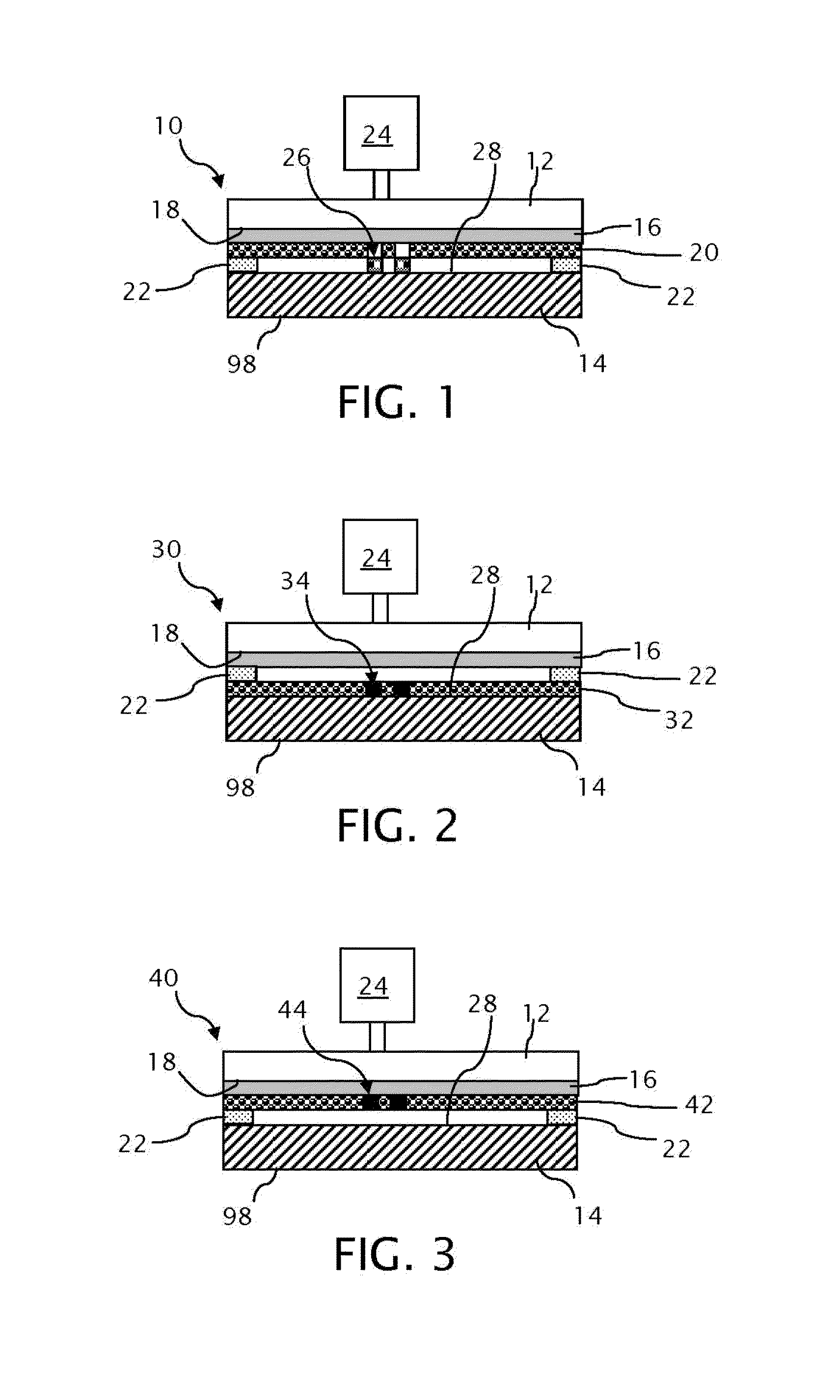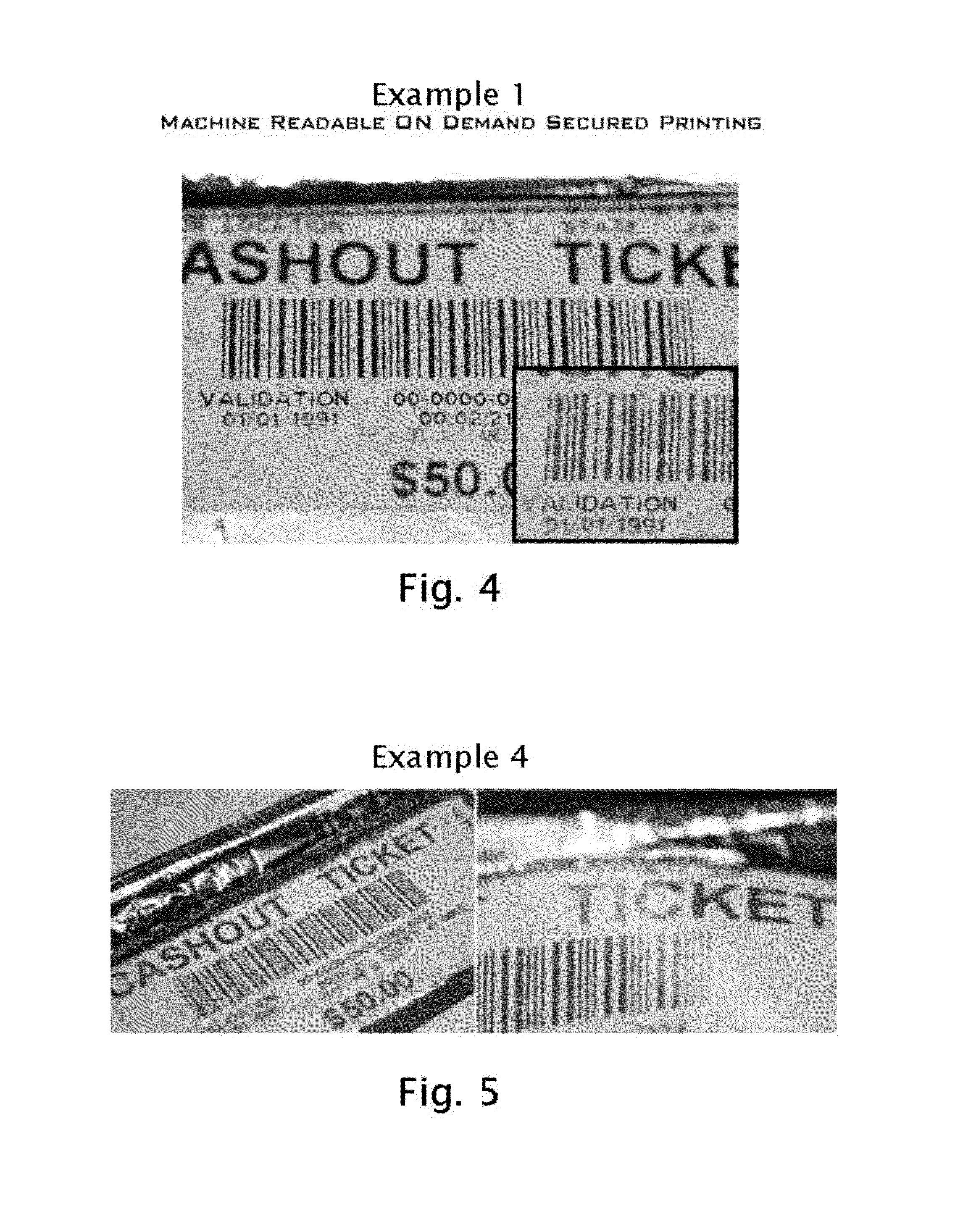On-demand printable construct
a technology of printable constructs and constructs, applied in the field of on-demand printable constructs, can solve the problems of limiting the effectiveness or shelf life of the print medium, thermal printing through inter-layer layers to be problematic, etc., and achieve the effect of enhancing the interactive respons
- Summary
- Abstract
- Description
- Claims
- Application Information
AI Technical Summary
Benefits of technology
Problems solved by technology
Method used
Image
Examples
example 1
Simple Pull Tab and Slot Ticket Samples
[0137]Pull tab and slot ticket samples with secured on-demand printed information were prepared using a 25 gage metallized PET film secured with a dual stick adhesive strip to each side to structure. The metallized PET film was adhered to a 2.5 inch by 6 inch selected direct thermal print paper (Kanzaki, Appleton, Green Bay Packaging, Fasson, or other commercial suppliers). The layered structure was thermally printed on the metallized film side such that the actual printed information was obscured by the metallized film. When the construct was delaminated, the thermally printed information was revealed at good visual resolution matching that of standard thermal printing done in the absence of a thin obscuring layer.
example 2
Comparative Direct Thermal Substrate Reactivity Comparison
[0138]Pull tab examples and slot ticket samples with secured on-demand printed information were prepared using a 25 gage metallized PET film secured with a dual stick adhesive strip to each side to structure. The metallized PET film was adhered to a 2.5 inch by 6 inch direct thermal print papers (Kanzaki item numbers 4009, 4014, and 5055). The layered structure was thermally printed on the metallized film side such that the actual printed information was obscured by the metallized film. When the construct was delaminated, the thermally printed information was revealed at good visual resolution matching that of standard thermal printing done in the absence of a thin obscuring layer for item number 4009. Item numbers 4015 and 5055 gave inferior print quality with unreadable bar codes.
example 3
Natural Medium or Sublimation / Transfer Ink Formulation
[0139]A natural medium for thermal sublimation transfer on-demand secured printing articles was prepared using micro-emulsions of carnauba wax. Carnauba wax mediums were either prepared in a concentrated form for single coat applications used for printing or in lower concentration solid forms for multi-coat printing applications. By way of example, Michelman carnauba dispersions were obtained from Michelman Corp. ML156, a low solids formulation (25%) was used for multi-coat applications (2-4 coats) to ensure adequate transfer thicknesses. ML156 was also concentrated to 50% volume by continuous stirring and forced air flow. Concentrated natural sublimation / transfer mediums were prepared at 50% by volume solids. Concentrated ML156 formulations were used for single-coat applications. Likewise, pre-concentrated formulations could be prepared with 35% solids using ML156HS and ML160HS at 50% solids.
[0140]Aqueous carnauba dispersions we...
PUM
| Property | Measurement | Unit |
|---|---|---|
| melting points | aaaaa | aaaaa |
| thickness | aaaaa | aaaaa |
| thickness | aaaaa | aaaaa |
Abstract
Description
Claims
Application Information
 Login to View More
Login to View More - R&D Engineer
- R&D Manager
- IP Professional
- Industry Leading Data Capabilities
- Powerful AI technology
- Patent DNA Extraction
Browse by: Latest US Patents, China's latest patents, Technical Efficacy Thesaurus, Application Domain, Technology Topic, Popular Technical Reports.
© 2024 PatSnap. All rights reserved.Legal|Privacy policy|Modern Slavery Act Transparency Statement|Sitemap|About US| Contact US: help@patsnap.com










